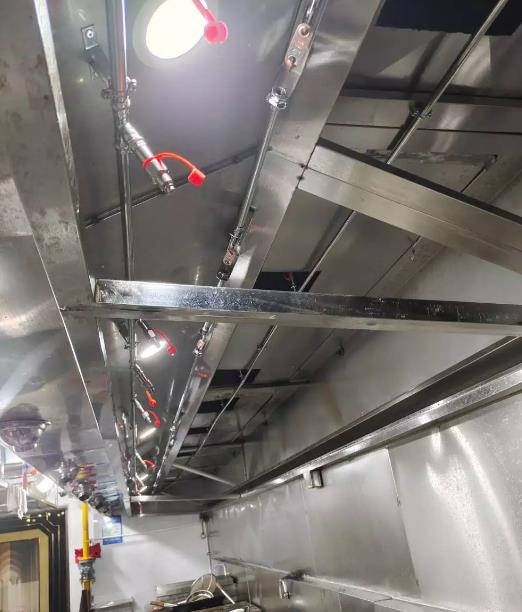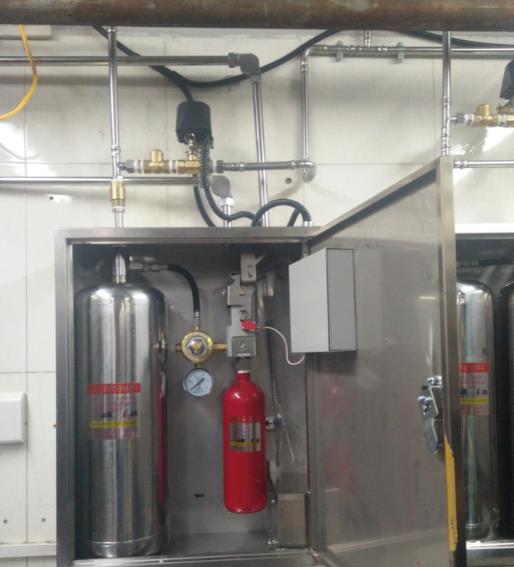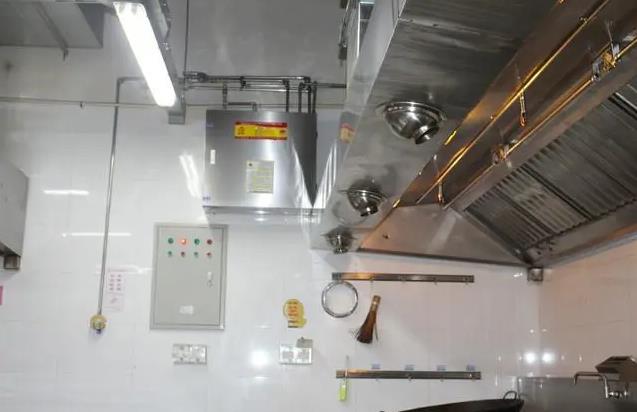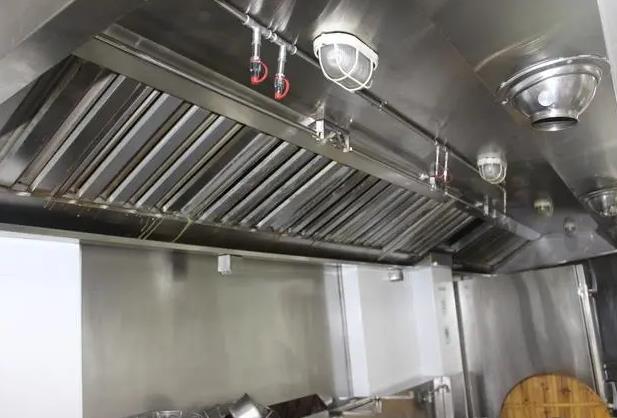
First, the harm of kitchen fire
In the kitchen, fires can start from a variety of causes, including stoves, ovens, microwaves, faulty wiring, open flames, and more. These fires can cause serious harm to personal safety, property and the environment. Here's a look at the possible damage from the fire:
Personal injury: Fire may result in injuries, including burns, poisoning, and suffocation. Smoke and toxic gases are common hazards in fires.
Property damage: Fires can damage kitchen equipment, furniture, and other property, resulting in expensive repairs and replacements.
Environmental pollution: Fire will produce a lot of toxic gases and pollutants, which will have a negative impact on the environment.
Second, the importance of kitchen fire extinguishing devices
In order to reduce the harm caused by kitchen fires, it is essential to install proper kitchen fire extinguishing devices. These devices can help extinguish fire sources in time, protect people from injury, reduce property damage, and reduce environmental pollution. Common kitchen fire extinguishing devices include fire extinguishers and nozzle heads.

Fire extinguishers: Fire extinguishers are handheld devices that are suitable for small fires. They are commonly used to extinguish open fires, such as oil pan fires. The selection of fire extinguishers should consider the type of fire source, because different types of fire sources require different types of fire extinguishing agents.
Fire nozzles: Fire nozzles are automatically activated devices that quickly extinguish the source of the fire and reduce the possibility of the fire spreading. For most home kitchens, fire nozzles are a more effective option because they do not require human intervention.
Three, different types of kitchen fire nozzles
There are many different types of fire nozzles in design and working principle. When choosing the right fire nozzle, you need to consider the specific needs and conditions of the kitchen.
1. Dry powder nozzle: Dry powder nozzle is the most common type and is usually used to extinguish grease fires. They use dry powder extinguishing agents, which can effectively extinguish open fires. The nozzle is also effective against electrical fires. The advantage of dry powder nozzle is strong versatility, but the disadvantage is that it will leave some residue after extinguishing the fire source.
2. Foam nozzle heads: Foam nozzle heads are suitable for grease fires because they form a protective layer of foam that insulates oxygen and extinguishes the source of the fire. Foam nozzle has good effect on open flame and grease fire.
3. Water nozzle: Water nozzle is another effective fire nozzle type, suitable for general purpose fires, but less effective on grease fires, because water may cause grease to splash, causing the fire to expand. However, some kitchens may use water nozzles as backup fire extinguishing devices.
4.CO2 nozzle heads: Carbon dioxide (CO2) nozzle heads are suitable for electrical fires because they do not cause electrical short circuits or damage electronic equipment. CO2 fire extinguishing agent is a colorless, odorless gas that can extinguish fire sources and quickly evaporate, leaving no residue.

5. Paint mist nozzle: Paint mist nozzle is a relatively new technology that uses a mist composed of tiny water droplets and dry powder to extinguish the source of the fire. This type of nozzle can effectively extinguish many types of fire sources, including grease fire, electrical fire and ordinary fire sources.
Four, the selection principle of kitchen fire nozzle
Selecting the appropriate kitchen fire nozzle is the key to ensure the effective operation of the fire extinguishing device. Here are some selection principles to help you choose the right fire nozzle for your home kitchen:
1. Fire nozzle type: First, determine which type of fire nozzle you need. If your kitchen is a constant risk of grease fires, then dry powder or foam fire nozzles may be more suitable. If there is a risk of electrical fire, consider CO2 nozzles.
2. Location of the fire nozzle: It is important to determine the installation location of the fire nozzle. Usually, fire nozzles should be installed in flammable areas, such as near the stove and oven, to ensure that the fire source is extinguished early.
3. Fire detection system: The use of fire detection system with the fire nozzle can improve the accuracy of fire detection. These systems can detect fires early and trigger automatic activation of fire nozzles.
4. Cleaning and maintenance: Choose a fire nozzle that is easy to clean and maintain. Keep the nozzle clean and perform regular inspection and maintenance as recommended by the manufacturer to ensure that it is working properly.
5. Cost and availability: Consider your budget and the availability of fire nozzles in the local market. Different types of fire nozzles have different prices, so there is a need to balance performance with cost.

6. Eco-friendly: Some fire nozzles may be more environmentally friendly and do not produce harmful residues. If environmental protection is your consideration, you can choose a nozzle that meets the relevant standards.
7. Brand and certification: Select certified fire nozzles from reliable brands to ensure they meet quality and performance standards. Different countries may have different certification standards, so be aware of local requirements.
Kitchen fires can cause serious personal injury and property damage, so it is essential to install proper kitchen fire extinguishing devices. Choosing the right nozzle type and following the correct selection principles can help reduce the risk of fire and ensure that the extinguishing unit can operate effectively when needed. Remember that regular maintenance and maintenance is also key to maintaining the performance of the fire extinguishing device. With careful selection and proper use, you can provide a safer environment for your home kitchen.


